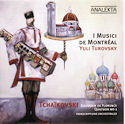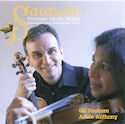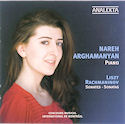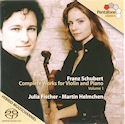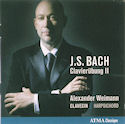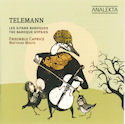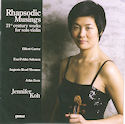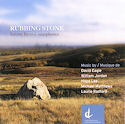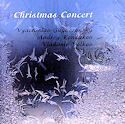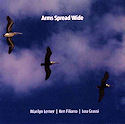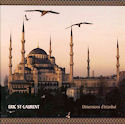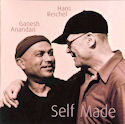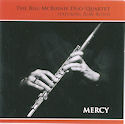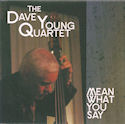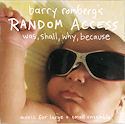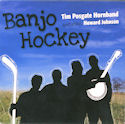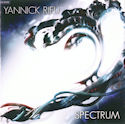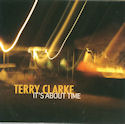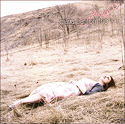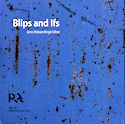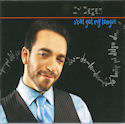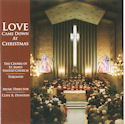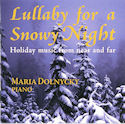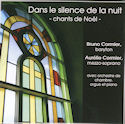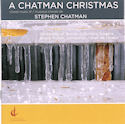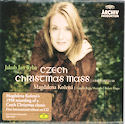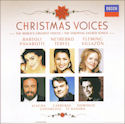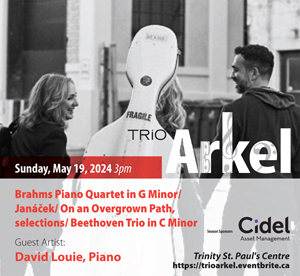EXTENDED PLAY - Bruce’s Stocking Stuffers
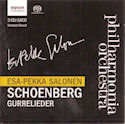 A new performance of Gurrelieder, Schoenberg’s Tristanesque narrative, is not so rare these days, but still of interest. Earlier this year Esa-Pekka Salonen conducted it with the Philharmonia Orchestra in the Royal Festival Hall. Among the soloists is soprano Soile Isokoski singing Tove. Salonen appears to be less Romantic than, say Stokowski or Ferencsik, but achieves some exquisite balances between soloists and orchestra in the third part. The speaker in “Herr Gänsefuss...” is Barbara Sukowa who is also in Abbado’s version (DG) in the role usually spoken by a male voice. The recording, issued by Signum (SIGCD173, 2 CD/SACDs) is lucid and dynamic.
A new performance of Gurrelieder, Schoenberg’s Tristanesque narrative, is not so rare these days, but still of interest. Earlier this year Esa-Pekka Salonen conducted it with the Philharmonia Orchestra in the Royal Festival Hall. Among the soloists is soprano Soile Isokoski singing Tove. Salonen appears to be less Romantic than, say Stokowski or Ferencsik, but achieves some exquisite balances between soloists and orchestra in the third part. The speaker in “Herr Gänsefuss...” is Barbara Sukowa who is also in Abbado’s version (DG) in the role usually spoken by a male voice. The recording, issued by Signum (SIGCD173, 2 CD/SACDs) is lucid and dynamic.
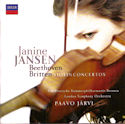 Paavo Järvi has just finished a complete Beethoven Symphony cycle with the Deutsche Kammerphilharmonie, Bremen, for RCA. These are electrifying performances, bringing new life to these perennial warhorses. Violinist Janine Jansen joins this same cast in the Violin Concerto with stunning results in a new Decca release (4781530). Her performance belongs to the “perfect” group emerging from young performers but, unlike most of them, she maintains the listener’s undivided attention. Jansen combines ease and elegance with authority, conveying Beethoven’s genius directly. The Britten Violin Concerto follows with Järvi at the helm of the London Symphony. They make a perfect pairing and complement Jansen’s previous Decca recordings of core repertoire.
Paavo Järvi has just finished a complete Beethoven Symphony cycle with the Deutsche Kammerphilharmonie, Bremen, for RCA. These are electrifying performances, bringing new life to these perennial warhorses. Violinist Janine Jansen joins this same cast in the Violin Concerto with stunning results in a new Decca release (4781530). Her performance belongs to the “perfect” group emerging from young performers but, unlike most of them, she maintains the listener’s undivided attention. Jansen combines ease and elegance with authority, conveying Beethoven’s genius directly. The Britten Violin Concerto follows with Järvi at the helm of the London Symphony. They make a perfect pairing and complement Jansen’s previous Decca recordings of core repertoire.
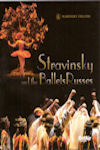 The Mariinsky Ballet’s performance of the meticulous re-construction of Nijinsky’s choreography and Roesch’s sets and costumes of the first performance of Le Sacre du Printemps, so enthusiastically reviewed here a few months ago, is now available on Blu-ray (BelAir BAC441). The high definition video makes an enormous difference, affecting a 3-D illusion, brilliantly drawing the viewer onto the stage… mighty impressive, indeed. Fokine’s original Firebird of 1911 is included, as is the documentary on the extensive research to realise the originals.
The Mariinsky Ballet’s performance of the meticulous re-construction of Nijinsky’s choreography and Roesch’s sets and costumes of the first performance of Le Sacre du Printemps, so enthusiastically reviewed here a few months ago, is now available on Blu-ray (BelAir BAC441). The high definition video makes an enormous difference, affecting a 3-D illusion, brilliantly drawing the viewer onto the stage… mighty impressive, indeed. Fokine’s original Firebird of 1911 is included, as is the documentary on the extensive research to realise the originals.
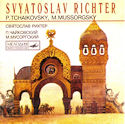 Collectors know that there are many live performances of Pictures at an Exhibition played by Sviatoslav Richter, each being individual and different from the others, no two the same. Richter was known to abhor the studio and therefore most of his recordings are drawn from live performances. In 1958 however, Melodiya managed to record him in the studio under ideal conditions. That recording has recently re-appeared (Melodiya MEL CD 1000515) and I had the opportunity to re-visit this exuberant reading. Here one can appreciate the finger work that is sometimes blurred in the live recording. Comparing it to the 1958 Sofia live performance for instance reaffirms what we already know about Richter, namely that never plays the same piece the same way twice.
Collectors know that there are many live performances of Pictures at an Exhibition played by Sviatoslav Richter, each being individual and different from the others, no two the same. Richter was known to abhor the studio and therefore most of his recordings are drawn from live performances. In 1958 however, Melodiya managed to record him in the studio under ideal conditions. That recording has recently re-appeared (Melodiya MEL CD 1000515) and I had the opportunity to re-visit this exuberant reading. Here one can appreciate the finger work that is sometimes blurred in the live recording. Comparing it to the 1958 Sofia live performance for instance reaffirms what we already know about Richter, namely that never plays the same piece the same way twice.
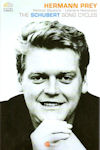 A MUST HAVE: The late Herman Prey, one of the last century’s greatest baritones, singing the three Schubert song cycles, Die Schöne Müllerin, Schwanengesang, and Winterreise (C MAJOR 700208, 2 DVDs). Prey was known for his perfect delivery of German art songs including, of course, Schubert. Not only did he have the voice, he was a consummate musician. The living room settings here are ideal and the sound appropriately intimate. How much nicer this is than a concert hall.
A MUST HAVE: The late Herman Prey, one of the last century’s greatest baritones, singing the three Schubert song cycles, Die Schöne Müllerin, Schwanengesang, and Winterreise (C MAJOR 700208, 2 DVDs). Prey was known for his perfect delivery of German art songs including, of course, Schubert. Not only did he have the voice, he was a consummate musician. The living room settings here are ideal and the sound appropriately intimate. How much nicer this is than a concert hall.
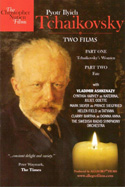 Two Films, Christopher Nupen’s celebrated 1989 video on Tchaikovsky’s life and music, is, at last, available on DVD (Allegro Films A10CND). Presented in two segments; Tchaikovsky’s Women deals with his relationships with women who passed through his life and their effect on his mental well-being, segueing nicely into Fate, his states of mind and the ensuing compositions. This is not presented as an entertainment but as a journal of his life and some major works. As is usual, Nupen provides the narrative, deftly drawing the viewer (me) into watching the entire 156 minutes without interruption. This is an important document and I liked it a lot.
Two Films, Christopher Nupen’s celebrated 1989 video on Tchaikovsky’s life and music, is, at last, available on DVD (Allegro Films A10CND). Presented in two segments; Tchaikovsky’s Women deals with his relationships with women who passed through his life and their effect on his mental well-being, segueing nicely into Fate, his states of mind and the ensuing compositions. This is not presented as an entertainment but as a journal of his life and some major works. As is usual, Nupen provides the narrative, deftly drawing the viewer (me) into watching the entire 156 minutes without interruption. This is an important document and I liked it a lot.
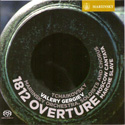 The Mariinsky Orchestra’s third CD on their own label is devoted to the music of Tchaikovsky (MAR 0503, CD/SACD). The 1812 Overture which opens the program is mighty impressive with the added cannons and bells heard as if from afar and not vying with the entire orchestra for sonic dominance. The Moscow Cantata, scored for soloists, chorus and orchestra, follows then the Marche Slave (sic), opus 31, the Festival Coronation March, and the Festival Overture on the Danish National Anthem, opus 15. Recorded in their own hall earlier this year this album is outstanding in the excellence of the recorded sound, presenting a wide and deep sound stage, with every instrument and voice in natural perspective. The dynamic range, too, is impressive. Credit must go to the producer, James Mallinson, who is also responsible for the recordings of both the London Symphony and the Chicago Symphony orchestras on their own labels.
The Mariinsky Orchestra’s third CD on their own label is devoted to the music of Tchaikovsky (MAR 0503, CD/SACD). The 1812 Overture which opens the program is mighty impressive with the added cannons and bells heard as if from afar and not vying with the entire orchestra for sonic dominance. The Moscow Cantata, scored for soloists, chorus and orchestra, follows then the Marche Slave (sic), opus 31, the Festival Coronation March, and the Festival Overture on the Danish National Anthem, opus 15. Recorded in their own hall earlier this year this album is outstanding in the excellence of the recorded sound, presenting a wide and deep sound stage, with every instrument and voice in natural perspective. The dynamic range, too, is impressive. Credit must go to the producer, James Mallinson, who is also responsible for the recordings of both the London Symphony and the Chicago Symphony orchestras on their own labels.
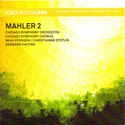 Mahler’s Second Symphony with Chicago Symphony under Bernard Haitink continues their ongoing Mahler cycle with an outstanding performance recorded live earlier this year (CSO-RESOUND CSOR 901916, 2 CD/SACD discs). This is not an angst-ridden performance but a well considered interpretation from a Mahler conductor who has performed this work countless times and has already two performances in the catalogue. This is one of the very greatest orchestras and their playing is outstanding by any standards. Again, the recording itself is state-of-the-art, dynamic with breathtaking three dimensional perspectives that transports listeners to the best seats in Symphony Hall.
Mahler’s Second Symphony with Chicago Symphony under Bernard Haitink continues their ongoing Mahler cycle with an outstanding performance recorded live earlier this year (CSO-RESOUND CSOR 901916, 2 CD/SACD discs). This is not an angst-ridden performance but a well considered interpretation from a Mahler conductor who has performed this work countless times and has already two performances in the catalogue. This is one of the very greatest orchestras and their playing is outstanding by any standards. Again, the recording itself is state-of-the-art, dynamic with breathtaking three dimensional perspectives that transports listeners to the best seats in Symphony Hall.
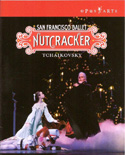 The San Francisco Ballet’s production of The Nutcracker is but one of the countless different ways Tchaikovsky’s perennial favourite is offered to delight young and old alike. The 2008 staging was seen on PBS last year but Blu-ray enthusiasts will be delighted with the release on OpusArte, looking and sounding better than witnessed on TV (OA BD7044 D). In addition to an illustrated synopsis, there are interviews with the choreographer, the scenic designer and the costume designer. Also a documentary on the 1915 World’s Fair in San Francisco. A good package.
The San Francisco Ballet’s production of The Nutcracker is but one of the countless different ways Tchaikovsky’s perennial favourite is offered to delight young and old alike. The 2008 staging was seen on PBS last year but Blu-ray enthusiasts will be delighted with the release on OpusArte, looking and sounding better than witnessed on TV (OA BD7044 D). In addition to an illustrated synopsis, there are interviews with the choreographer, the scenic designer and the costume designer. Also a documentary on the 1915 World’s Fair in San Francisco. A good package.


